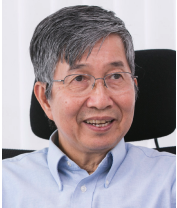
Pioneers of OLED technology head to Inventors Hall of Fame
EP&T Magazine
Electronics Optoelectronics Engineering Supply Chain OLED OLEDTwo pioneers of OLED technology, widely used in all electronic devices today, will be among the 15 inductees recognized this spring for their world-changing inventions by the National Inventors Hall of Fame in Alexandria VA.
This year’s Class of Inductees includes innovators such as Ching Wan Tang and Steven Van Slyke (OLED display technology), both who pioneered the organic light emitting diode (OLED), an advance in flat-screen displays found in computers, cell phones and televisions that provides increased power efficiency, longer battery life and improved display quality.

Ching Wan Tang
Born in Hong Kong, chemist Ching Wan Tang received his higher education in Canada and the United States, and he joined Eastman Kodak in 1975. After hiring Van Slyke, they applied the organic heterojunction, a bilayer structure of an electron donor and an electron acceptor invented by Tang, to various applications including OLEDs. OLEDs can be used wherever LCDs are used. They are thinner, lighter, provide superior brightness and color, and offer ultra-fast response time for functions such as refreshing and on-off switching.
Unlike LCDs that rely on a backlight that passes through color filters to produce light, OLED screens utilize luminescent organic materials to make their own light. The first OLED product was a display for a car stereo, commercialized by Pioneer in 1997. Kodak’s EasyShare LS633 digital camera, introduced in 2003, was the first consumer electronic product incorporating a full-color OLED display. The first television featuring an OLED display, produced by Sony, entered the market in 2008.
Today, Samsung uses OLEDs in all its smartphones, and LG manufactures large OLED screens for premium TVs. Other companies currently incorporating OLED technology include Apple, Google, Facebook, Motorola, Sony, Hewlett-Packard, Panasonic, Konica, Lenovo, Huawei, BOE, Philips and Osram. The OLED display market is expected to grow to $57 billion by 2026. Tang, named on 84 patents, also invented the first heterojunction organic solar cell.
Professor emeritus at the University of Rochester and currently with the Hong Kong University of Science and Technology, Tang has received numerous awards for his work on organic materials and electronics, including the 2011 Wolf Prize in Chemistry, and the 2004 American Chemical Society Award for Team Innovation, an honor he shares with Van Slyke.
Van Slyke’s career launched at Eastman Kodak

Steven Van Slyke
Van Slyke launched his 30-year career at Eastman Kodak in 1979, when he and Tang began developing OLED technology. OLEDs can be used wherever LCDs are used. They are thinner, lighter, provide superior brightness and color, and offer ultrafast response time for functions such as refreshing and on-off switching.
Unlike LCDs that rely on a backlight that passes through color filters to produce light, OLED screens utilize luminescent organic materials to make their own light. The first OLED product was a display for a car stereo, commercialized by Pioneer in 1997. Kodak’s EasyShare LS633 digital camera, introduced in 2003, was the first consumer electronic product incorporating a full-color OLED display.
The first television featuring an OLED display, produced by Sony, entered the market in 2008. Today, Samsung uses OLEDs in all its smartphones, and LG manufactures large OLED screens for premium TVs. Other companies currently incorporating OLED technology include Apple, Google, Facebook, Motorola, Sony, Hewlett-Packard, Panasonic, Konica, Lenovo, Huawei, BOE, Philips and Osram.
The OLED display market is expected to grow to $57 billion by 2026. A leading authority on OLED technology, he holds 40 patents related to OLED materials and device architecture, and he has received numerous awards including the 2004 American Chemical Society Award for Team Innovation, an honor he shares with Tang. Today, Van Slyke is Chief Technology Officer at Kateeva, which is pioneering inkjet printing technology enabling high-volume manufacturing of flexible and large-size OLEDs.
